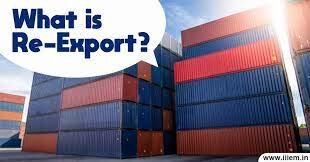Re-export or re-exportation is a quotidian term in the field of the international trade sector. Re-export means a country can export goods that were previously imported from another country. For example, China exports footwear to Hongkong which is again re-exported to other countries including India. Dubai is considered as a prime re-export hub and re-exports various items to Iran because of U.S. trade sanctions against it. To know more about re-export, you should join the best import-export courses online from a reputed import-export institute in India.
Dubai is also an entrepot. This means Dubai is a port where goods are imported, stored or traded usually to be exported again. Entrepot refers to duty-free pots that deal with the high volume of re-export goods.
Let’s take a look at some of the reasons why countries re-export goods.
· To send back imported items for specific reasons like jobbing, execution of a contract, servicing or repairing of machinery, present in fairs or exhibitions, etc.
· Re- exports often happen when the exported items are not matched up in terms of quality measures or the exported items don’t match with the buyer’s expectations or when the goods are been exported for a specific reason like projects, exhibitions, etc. For instance: There are many such machinery instruments that are exhibited in the “Vibrant Gujarat Summit” held in India.
· The country is located in the mid-way between the exporter country (manufacturer of the goods) and the destination country (importer of the goods). This method was used earlier when the trading was done via wind-powered ships. These days, it has become an outmoded trend.
Certain facts you should keep in mind while re-export goods
· The condition of the items during export and import should remain the same. This means the goods should be unaffected and intact after importing and before exporting.
· You should keep the records of re-exported goods separately for organizational comfort, efficiency and analytical purposes. In some cases, the re-exported goods need some additional information.
While we are talking about re-export, we should go through the re-export procedure. These rules are set by the Indian government and may not be applicable in other countries.
· Custom notifications are issued allowing duty exemption or duty concession on import of goods under different circumstances provided these items are re-exported within the specified time frame.
· To ensure that the goods are re-exported, the importers are needed to sign bonds undertaking to pay duty that was earlier excused during the time of import. This needs to be fulfilled (without the failure) to re-export goods within the stipulated time.
· The bonds are annulled when the importer had re-exported the goods and obeyed the conditions of the notification.
· Follow‐up action should be taken by the Customs after the import of such goods. This is required till the annulment of Bond. Failure to fulfil any of the conditions of the notifications demands payment of duty that was relieved or remitted at the time of import or re‐import.
The above procedure is followed only in India. Different countries have different procedures and conditions.
According to the U.S. Bureau of Industry and Security (BIS), a re-export is “the shipment or transmission of an item subject to the Export Administration Regulations (EAR) from one foreign country (i.e., a country other than the United States) to another foreign country. A re-export also occurs when there is ‘release’ of technology or software (source code) subject to the EAR in one foreign country to a national of another foreign country.”
In simpler terms, if you need a license to export any item, software or technology from the U.S. to any other country, then that same item, software or technology demands a license to be reexported from your country (apart from the US) to that same country. This is applicable for finished products as well as various parts of the finished products.
Now, you have adequate knowledge about re-export or re-exportation.
To know more about re-export, join the best import-export courses online from Digitalexim.Digitalexim is an established institute that welcomes the aspirants with the best import-export courses online. The institute has many deft and experienced trainers who will provide you with in-depth knowledge of re-export so that you can run your import-export business successfully in the international trade market. By visiting the website of the institute, you will know more about it and its courses.

